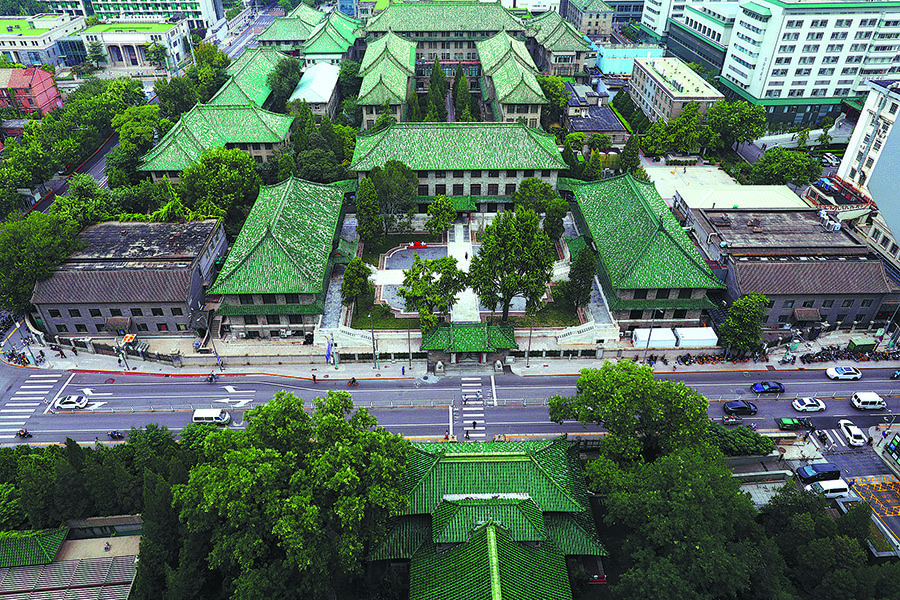

According to experts, the paintings were created in the early 20th century with intrinsic cultural and art value. Li Liusan, Party secretary of the China Academy of Cultural Heritage, who guided aspects of the restoration, says that the arcades exemplify the fusion of Eastern and Western art.
He adds the restoration team utilized modern technology to preserve their historical authenticity and aesthetic integrity to the fullest extent.
Gao Feng, head of the restoration team, who is also an expert in mural restoration of the China Academy of Cultural Heritage, says the conservation and restoration plan was complicated and included 53 steps.
The steps included stabilization, repair, surface cleaning, and pigment reconversion. Emerging technologies, such as multispectral and hyperspectral imaging, were also applied in the project.
One of the challenges that Gao's team faced was peeling.
Conservators patiently steamed these areas to soften them and ensure the applied paint could attach itself to the surface.
It was estimated that the restoration of every 0.11 square meters of such areas took about a week to complete.
Gold leaf was originally used in the paintings, and restorers had to follow time-honored methods to apply it in order to preserve their historical authenticity, Gao says.